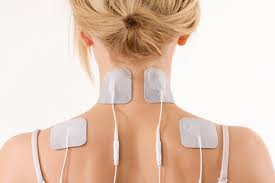‘The aim of the wise is not to secure pleasure, but to avoid pain.’ Aristotle
Pain is something everyone experiences from time to time, but latest research shows that just under 28 million people in the UK experience persistent or chronic pain, and nearly 50 million adults in the US experience significant chronic or severe pain. For these people, not surprisingly, continuous and unrelenting pain can take over their whole life.
Prescribed pain killers can be effective, but their use is limited by side effects. Pain relieving creams and gels are great for localised muscle and joint pain, and many supplements are effective for reducing inflammation, back pain and knee pain due to arthritis.
An increasing number of medical devices are also designed to relieve pain. Some are based on ancient technologies such as acupressure and heat, while others are based on modern electromagnetic currents that suppress pain messages and promote healing.
Red light pain relieving devices
Red light wavelengths are widely used in sports medicine to reduce pain and promote healing. Red light emitting devices can ease pain and stiffness in the shoulders, knees, elbows, hands, feet or back – just about anywhere. They help to relieve carpal tunnel syndrome, arthritis pain, bursitis, tendonitis, plantar fasciitis, sciatica and fibromyalgia as well as sports injuries.
Although the exact way in which red light relieves pain is not fully understood, infrared wavelengths (between 800 and 1200 nm) can penetrate from two to ten millimetres into the body .This appears to stimulate mitochondria – the battery-like energy and oxygen processing units within cells – to stimulate cell regeneration, relieve pain, including nerve-generated (neuropathic) pain which is notoriously difficult to subdue. Red light therapy can also hasten wound healing and has been used medically to help heal bed sores and diabetic ulcers.
LED red light therapies use wavelengths that produce very little heat, while others use infra-red wavelengths that generate heat which has its own additional pain-relieving action.
Pain relieving pens
Pain relief pens work in a similar way to TENS (transcutaneous electrical nerve stimulation). Simple place the pain relief pen over a painful area and depress the button to release a controlled electronic current that blocks the transmission of pain signals.
When a pain clinic used the Pain Gone Pen device in 50 people with chronic pain associated with trigger points in the lower back or large joints, significant effects were found. Using the pen four times a day for two weeks significantly reduced pain perception, the need for oral pain killers, and increased mobility.
Pain relief with TENS
TENS stands for Transcutaneous Electrical Nerve Stimulation and is a drug-free way to relieve pain.
 A typical TENS device has four electrode pads that are placed on your back (or over painful areas). When activated, these deliver tiny pulses of electric current to stimulate nerve endings in the skin. This pain-free stimulation – which feels rather like a buzzing tingle – temporarily numbs surrounding tissues and sends pain-blocking signals to the brain. Because the brain has so many incoming messages to deal with, it ‘tunes out’ nerve pathways that send constant low-grade signals, so it is not distracted from other more important sensory input. This reduces pain perception and the discomfort is numbed in a similar way to acupuncture.
A typical TENS device has four electrode pads that are placed on your back (or over painful areas). When activated, these deliver tiny pulses of electric current to stimulate nerve endings in the skin. This pain-free stimulation – which feels rather like a buzzing tingle – temporarily numbs surrounding tissues and sends pain-blocking signals to the brain. Because the brain has so many incoming messages to deal with, it ‘tunes out’ nerve pathways that send constant low-grade signals, so it is not distracted from other more important sensory input. This reduces pain perception and the discomfort is numbed in a similar way to acupuncture.
Tens Machines offer fast, effective relief of many types of pain. Some are supplied with 8 electrodes so you can treat two areas simultaneously. Switch between constant, modulation and burst modes, and vary the pulse rate to find what works best for your individual pain.
Microcurrent therapy for pain relief
 Microcurrent therapy generates a tiny microcurrent that mimics the body’s natural electrical currents and reinforces them to reduce pain and stimulate healing. The electrode pads can be placed over the painful area but also work if the device is attached to an arm or leg, as the microcurrents travel through the body to wherever there is inflammation and pain.
Microcurrent therapy generates a tiny microcurrent that mimics the body’s natural electrical currents and reinforces them to reduce pain and stimulate healing. The electrode pads can be placed over the painful area but also work if the device is attached to an arm or leg, as the microcurrents travel through the body to wherever there is inflammation and pain.
I’m wearing an Arc4Health devices as a write this, having been virtually immobilised by lower back pain. Within two minutes of wearing the device, I was able to stand and walk around again.
Arc4Health is worn on the arm or leg, and generates electrical microcurrents that mimic the body’s own bioelectrical field. This promotes pain relief and healing and can be used to treat acute pain due to migraine, surgery, injury, fractures or a slipped disc, for example, or for long-term (chronic) pain due to conditions such as arthritis, frozen shoulder or fibromyalgia.
The Arc4Health device has 4 settings, two of which relieve pain, and two of which promote tissue repair and healing. Typically, you work through the four settings, using each one for a total 3 hours a day for 3 weeks before moving on to the next setting.
A study involving 1,949 patients using microcurrent therapy for pain management found that 93% experienced significant pain reduction.
Arc4Health costs £249.99 from arc4health.com. It is an EC certified Class 11a medical device.
Electronic pain relief patches
Pain relieving patches are rather like mini-versions of a TENS machine. When applied to the skin, they generate a micro current to reduce pain and stimulate healing. Some include additional herbs and other natural ingredients to relieve pain. When the Pain Ease Patch was trialled in 45 people with severe pain due to fibromyalgia, over half reported a significant reduction of muscular and joint pain within an average of 28 hours use.
These patches work really well to relieve pain and are widely recommended by pain clinics as a drug-free method of targeting pain relief.
Salonpas patches for pain relief
Salonpas are medicated plasters that are licensed for the symptomatic relief of pain of muscles and joints associated with strains and sprains. They contain warming analgesics, methyl salicylate (105mg) and levomenthol(31.5mg) which have an anti-inflammatory pain killing action.
Methyl salicylate is converted to salicylic acid, and works by improving circulation and by inhibiting the production of substances (prostaglandins) which trigger pain and inflammation. Essentially, it’s like applying topical aspirin directly to the area where it’s needed. Evidence-based reviews of topical analgesics have found that, in acute conditions, topical salicylate was significantly better than placebo.
Levomenthol acts as a counterirritant, and has its own analgesic and local anaesthetic actions which result from the activation of natural opioid receptors.
You apply one plaster to the affected area and leave it in place to provide pain relief for 8 hours. If pain recurs 8-12 hours after applying the first plaster a second plaster can be applied. Do not use more than 2 plasters per day, or for more than 3 days in a row.
Salonpas should not be used if you have had problems when taking oral acetylsalicylic acid or NSAIDs (eg ibuprofen) such which can trigger asthma in some people, or if you have an active or suspected gastrointestinal ulcer or a history of gastrointestinal ulcer or chronic dyspepsia. You can read the UK patient information leaflet for Salonpas Pain Relief Patch Medicated Plasters here.
If you have used a device and found it helped your pain, please let me know in the comments below. Thanks.
Image credits: pixabay;






2 thoughts on “Best Pain Relieving Devices”
I have used Arc4Health for six years and I can honestly say it is the most remarkable device I have ever come across. It saved my horse from being put to sleep because of ligament damage, saved my pony from laminitus twice, and my sanity after I fell off my horse head first and couldn’t hold my head up. My neck was bent and the discs were squashed. After using the device for three weeks my neck had straightened out and elongated. I have lent my device to others and they have have had successful results. My experience has been shared with over one hundred people.
I am impressed with the effects of using it too, and find I lend out my device regularly. Thanks for sharing. Best wishes, Sarah B